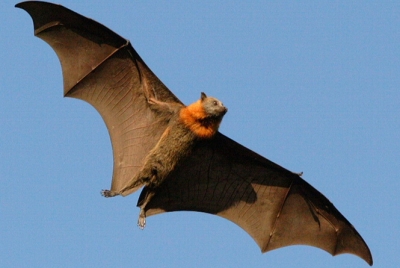
The flying fox is not really a fox, but a large, fruit-eating bat. There are 175 species of flying fox, and unlike most bats they have large eyes and long muzzles. It is their fox-like face that led to the name ‘flying fox’. They fly at dusk in search of fruit, relying mainly on sight and smell to find their way. Flying foxes are found in Asia, Africa, Australia and the islands of the Pacific.
Most bats are small in size and look like mice. They are insect-eaters. Their wing-span is rarely as much as 30 cm. The biggest of all bats are the fruit eaters or flying foxes. One bat – the Kalong or Malay fruit bat has a wing-span of 1.5 metres. They have long sharp teeth with which they can even break a coconut. They weigh up to 1.5 kg. Unlike other bats, flying-foxes have well developed eyes which enable them to find their way by sight and not by sound waves. Their love for fruit makes them nuisance for orchards. Flying foxes live in thickly populated areas and make their homes in trees, resting close to a suitable source of food.
Bats fly like birds, yet, in fact, they are mammals. They are the only mammals that can truly be said to fly. Their wings do not have feathers, but are made of a thin sheet of skin stretched between the long ‘finger’ bones. In most bats the wings are also joined to the legs and tail. Other ‘flying’ mammals, such as the flying squirrels can only glide, but the bats actually fly.

